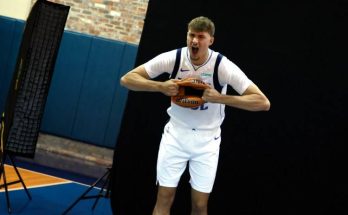Duke University has built a storied basketball tradition, often highlighted by its legendary guards, but the program has also been home to some truly dominant centers. While Duke isn’t always the first school that comes to mind when thinking of elite big men, several towering figures have anchored the paint, leading the Blue Devils to championships and etching their names into college basketball lore. From the early days under Vic Bubas to the modern era under Mike Krzyzewski and Jon Scheyer, Duke’s centers have been instrumental in shaping the team’s identity and success.
One of the earliest standout big men was Mike Lewis, a 6’8” force in the late 1960s. Lewis was a rebounding machine, averaging a double-double over his career and leading Duke to the 1966 Final Four. His physicality and relentless work on the glass set the tone for future Duke centers. Another key figure from that era was Randy Denton, a 6’10” bruiser who played in the early 1970s. Denton was a double-double machine, known for his toughness and scoring ability in the post. His dominance helped keep Duke competitive during a transitional period for the program.
The 1980s saw the rise of Jay Bilas, who, while not a traditional back-to-the-basket center, was a skilled and intelligent big man who played a crucial role in Coach K’s early teams. Bilas’s defensive prowess and basketball IQ made him a foundational piece as Duke began its ascent to national prominence. But it was in the 1990s that Duke truly had its first superstar center: Christian Laettner. Though often remembered for “The Shot” against Kentucky, Laettner was a complete player—a 6’11” big who could score inside, step out for mid-range jumpers, and even handle the ball like a guard. He was the best player on back-to-back national championship teams (1991, 1992) and remains one of the greatest college basketball players of all time.
The late 1990s and early 2000s brought Elton Brand, a 6’8” powerhouse who redefined Duke’s interior play. Brand was an unstoppable low-post scorer, averaging 17.7 points and 9.8 rebounds as a sophomore before becoming the No. 1 overall NBA draft pick in 1999. His combination of strength, footwork, and touch around the rim made him one of the most efficient big men in college basketball history. Alongside him, Shane Battier—though more of a forward—often played as a small-ball center, using his intelligence and defensive versatility to dominate in key moments, including the 2001 national championship run.
In the 2010s, Duke continued to produce impactful centers, though many were more mobile, modern bigs rather than traditional back-to-the-basket players. Mason Plumlee was a high-flying 6’11” athlete who thrived in transition and as a rim-runner, helping Duke win the 2010 national title as a freshman and later developing into an All-ACC performer. His brother, Marshall Plumlee, followed as a defensive anchor and leader on the 2015 championship team. Jahlil Okafor, however, was a throwback to the classic post-up center. The 6’11” phenom was nearly unstoppable in the paint during his lone season at Duke (2014-15), averaging 17.3 points and 8.5 rebounds while leading the Blue Devils to a national title. His footwork and touch around the rim made him one of the most polished offensive big men in recent memory.
More recently, Marvin Bagley III showcased a new breed of Duke center—a versatile, athletic big who could score inside, stretch the floor, and dominate the boards. Bagley’s 2017-18 season was one of the best by a freshman in Duke history, as he averaged 21.0 points and 11.1 rebounds, earning ACC Player of the Year honors. His ability to play above the rim and score from anywhere made him a nightmare matchup. Vernon Carey Jr. continued the trend of dominant one-and-done centers, using his brute strength and soft touch to average 17.8 points and 8.8 rebounds in 2019-20.
While Duke’s system often emphasizes guard play and perimeter scoring, the program’s success has frequently hinged on the contributions of its big men. Whether it was Laettner’s clutch performances, Brand’s dominance, Okafor’s polished post game, or Bagley’s explosive athleticism, Duke’s best centers have left an undeniable legacy. They may not always get the same spotlight as the flashy guards, but without them, the Brotherhood wouldn’t have reached the heights it has. From the old-school bruisers of the 1960s to the modern, multifaceted bigs of today, Duke’s centers have been the backbone of some of the greatest teams in college basketball history.



